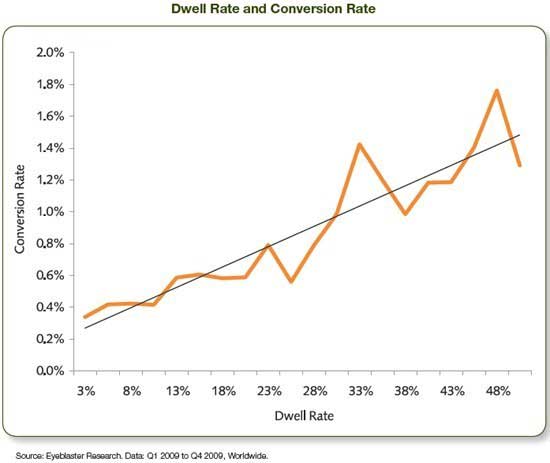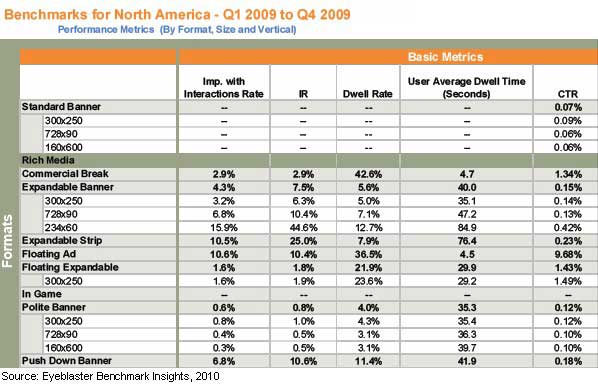Marketing campaigns that actively engage consumers online for longer periods of time—by enticing them to "Dwell"—are more likely to generate high conversion rates and are three times more effective at driving brand-related Web searches, according to a study by Eyeblaster.
A measure of rich-media interactivity and touch, Dwell was introduced by Eyeblaster in 2008.
Dwell Rate measures how successfully a digital ad captures user attention by quantifying the proportion of users who physically touch the ad. Dwell Time measures the length of user engagement with ads and various other characteristics of interactivity.
Engagement Leads to Conversion
Digital ads with high Dwell levels are more effective in generating conversions, according to Eyeblaster. An analysis of more than 13 billion rich-media impressions served in 2009 found that increasing Dwell from 5% to 15% increases conversion rates 45% on average, from 0.4% to 0.6%.

Below, findings from the study Using Dwell to Measure Advertising by Eyeblaster, Microsoft Advertising, and comScore, which analyzed samples of high-Dwell and low-Dwell campaigns to measure their impact on branding.
Branding Correlation and Increased Traffic
Rich-media campaigns with high Dwell rates generated increases in brand-related keyword searches 39% among users exposed. By contrast, campaigns with low Dwell rates lifted brand-related searches just 12%.
In addition, high-Dwell campaigns increased Web traffic 17%, compared with the 10% lift generated from low-Dwell campaigns.
Dwell also increased brand engagement—increasing pageviews and time spent on advertiser sites.
Use of Video to Increase Dwell
Video continues to provide more lift in Dwell Rates and Dwell Time than non-video ads: On average, adding video to banner ads increased Dwell Rate 29%, compared with non-video ads.
Video also nearly doubled average Dwell Time—and those results were similar across ad formats, verticals, and ad sizes.
Looking for great digital marketing data? MarketingProfs reviewed hundreds of research sources to create our most recent Digital Marketing Factbook (May 2010), a 296-page compilation of data and 254 charts, covering email marketing, social media, search engine marketing, e-commerce, and mobile marketing. Also check out The State of Social Media Marketing, a 240-page original research report from MarketingProfs.
Benchmarks: Impact of Ad Placement by Rich Media Format
Overall, ads the content of which users become immersed in register high Dwell levels.
Measured by click-through rate (CTR), formats such as commercial breaks (1.34%) and floating ads (9.68%) perform better than standard banner ads (0.12%).

"It's encouraging to see the same metric applicable to different marketing objectives," said Gal Trifon, CEO and cofounder of Eyeblaster. "The connection between engagement and conversions emphasizes the value of digital display as a response medium, while the joint research with Microsoft Advertising shows clear branding correlation."
About the data: Findings are based on a sample of ad campaigns from among 800 rich-media campaigns served by Eyeblaster on Microsoft Advertising sites between January 2009 and June 2009; the study was conducted by comScore.



